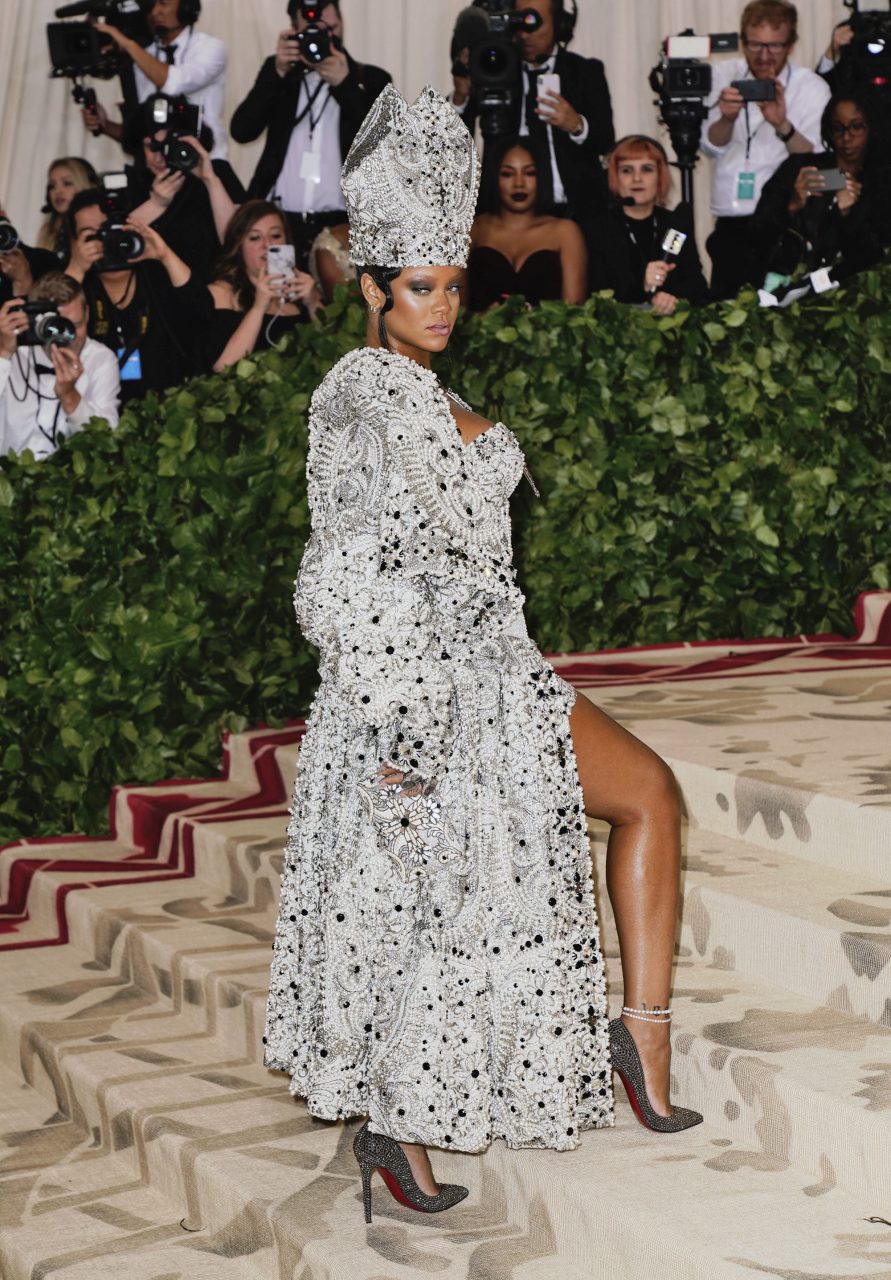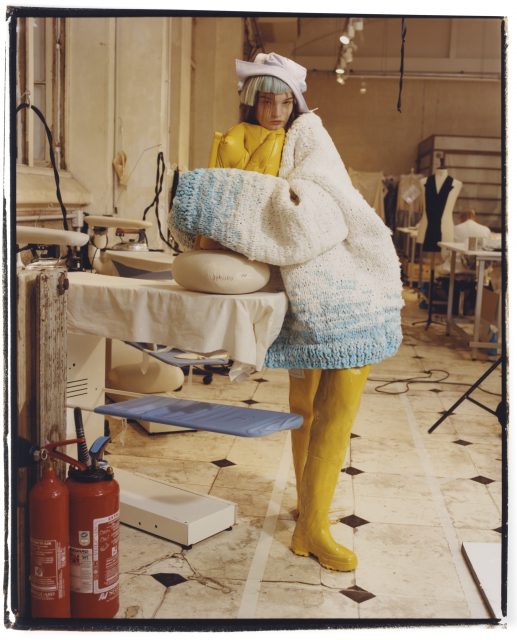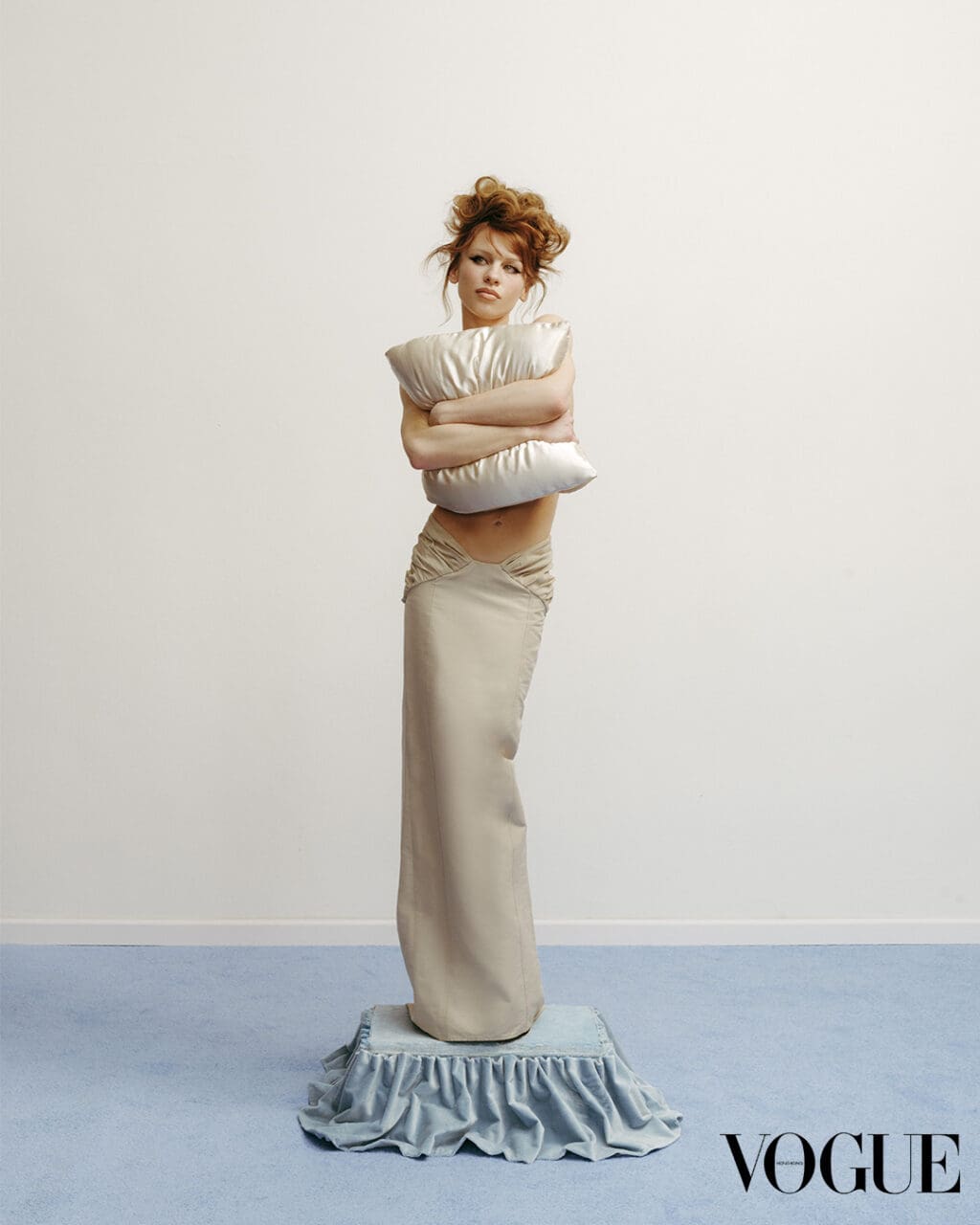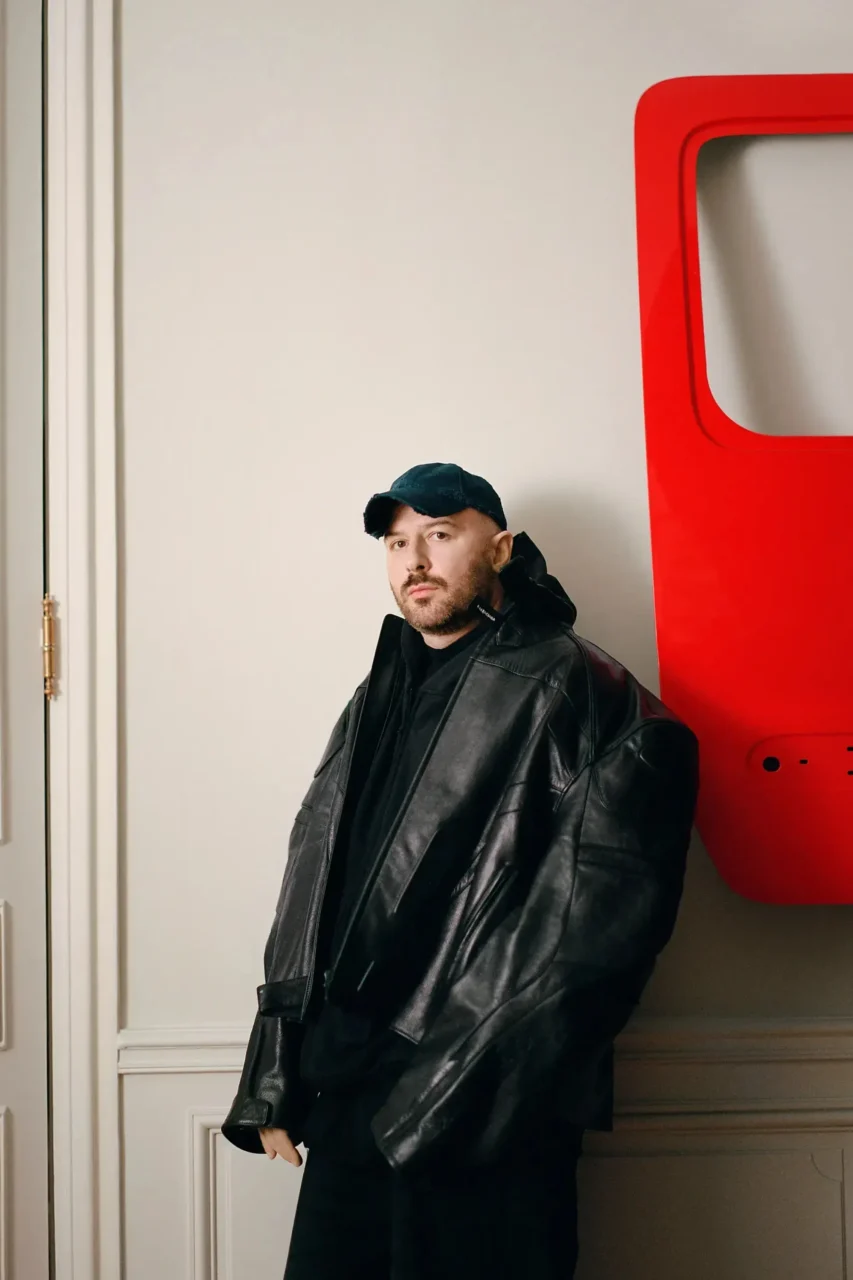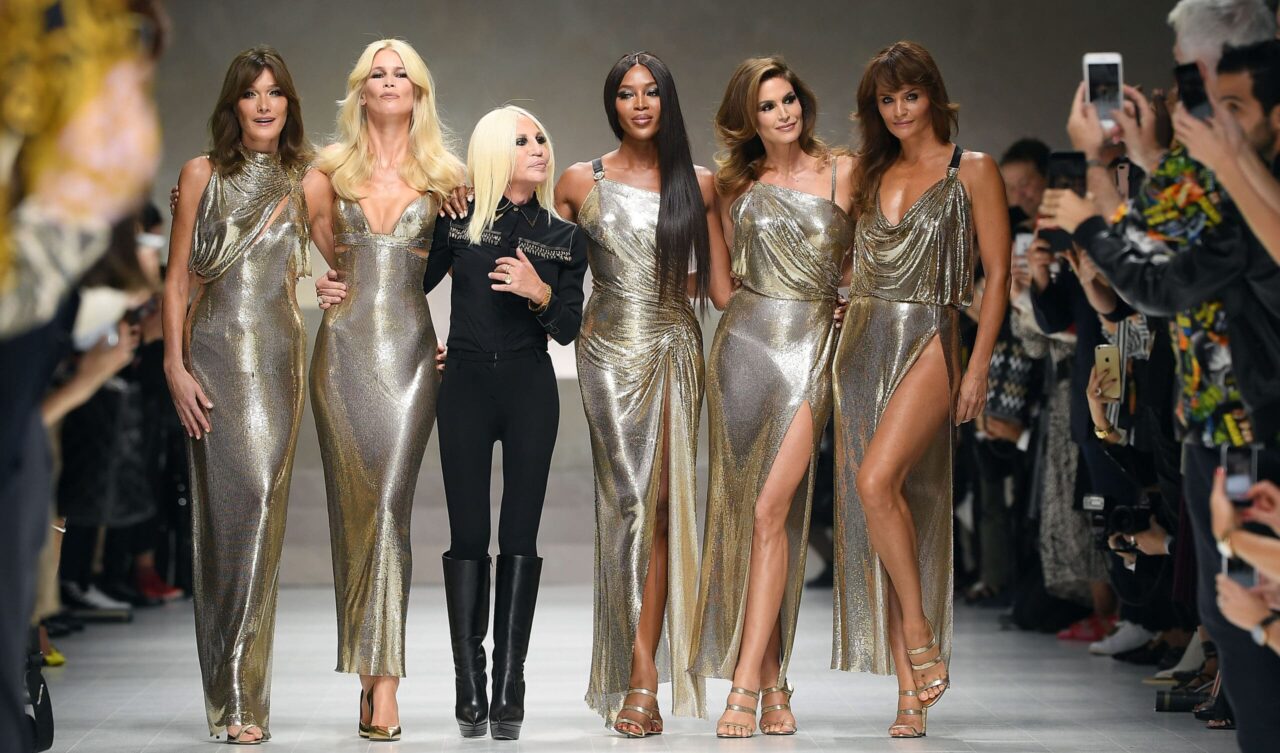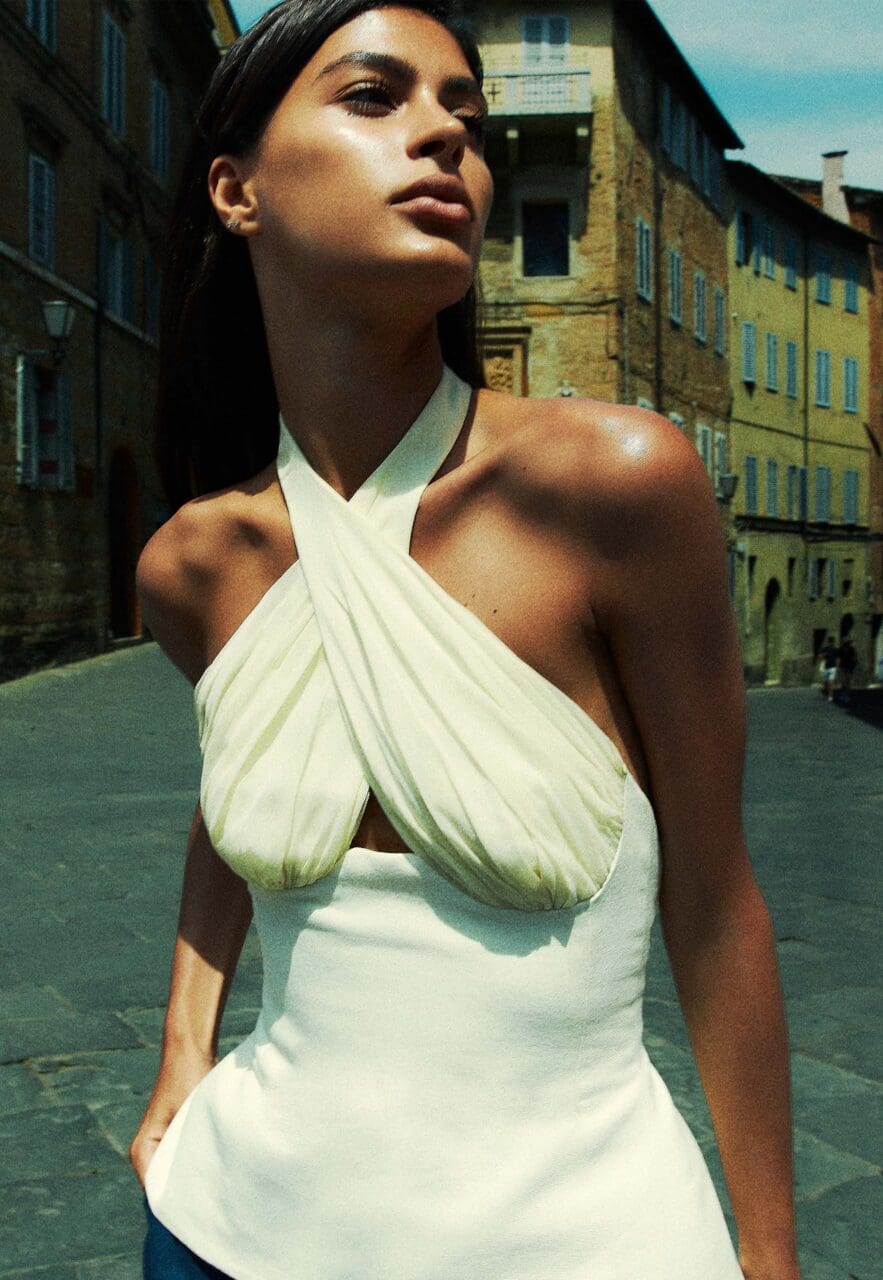When Rihanna ascended the red carpet at the Metropolitan Museum of Art’s 2018 Costume Institute exhibition “Heavenly Bodies,” channeling Catholic panoply in a coruscating pearl-and-crystal-encrusted minidress and full-skirted robe designed by John Galliano for Maison Margiela Artisanal—replete with a papal miter fashioned by Stephen Jones—she showed us, as we noted then, “why she continues to inspire the fashion faithful.” Designer Tomo Koizumi, a Galliano admirer since the age of 14, when he first saw the designer’s work for Dior, recalls his delighted surprise at Rihanna’s appearance. “It was a very sophisticated look that betrayed my expectations in a good way,” he remembers, so he was both delighted and awed when Galliano surrendered the outfit’s toile for a Vogue-sponsored collaborative repurposing exercise to encourage designers to communicate with one another through their work.
Koizumi’s initial response to the Margiela garment’s stiff calico was “to paint the toile as a canvas by using a ruffle-paint technique developed for my next collection,” he says. “I tried to create a harmonious ensemble when the three pieces were put together, while making each piece individual.” He opened up the sleeves to reveal the wearer’s arms, gave the dress more volume—“inspired by Rococo design of the 18th century”—by adding frills between the layers and, in a nod to what he calls Maison Margiela’s “reconstructive design,” repurposed the crinoline hoops of a wedding-dress skirt.
In that same transformative mood—recalling Koizumi’s Galliano-inspired teenage experiments with repurposing vintage garments to wear clubbing—the bodice was embellished with deadstock neon-hued ribbons and the miter dotted with puff balls of net frills for an antically secular makeover, “like a flower design—to give more pop.” After a three-week transformation that involved 50 collaborators and the wedding-dress atelier of Treat Maison, the Rihanna ensemble is now infused with Koizumi’s kawaii spirit. “I love big dresses, and colorful ones,” Koizumi explains of the exuberant result, “and I wanted to give it a craftier feel.
“The best reaction is surprise,” he adds. “I want to arouse positive emotions, so that people can have fun.”
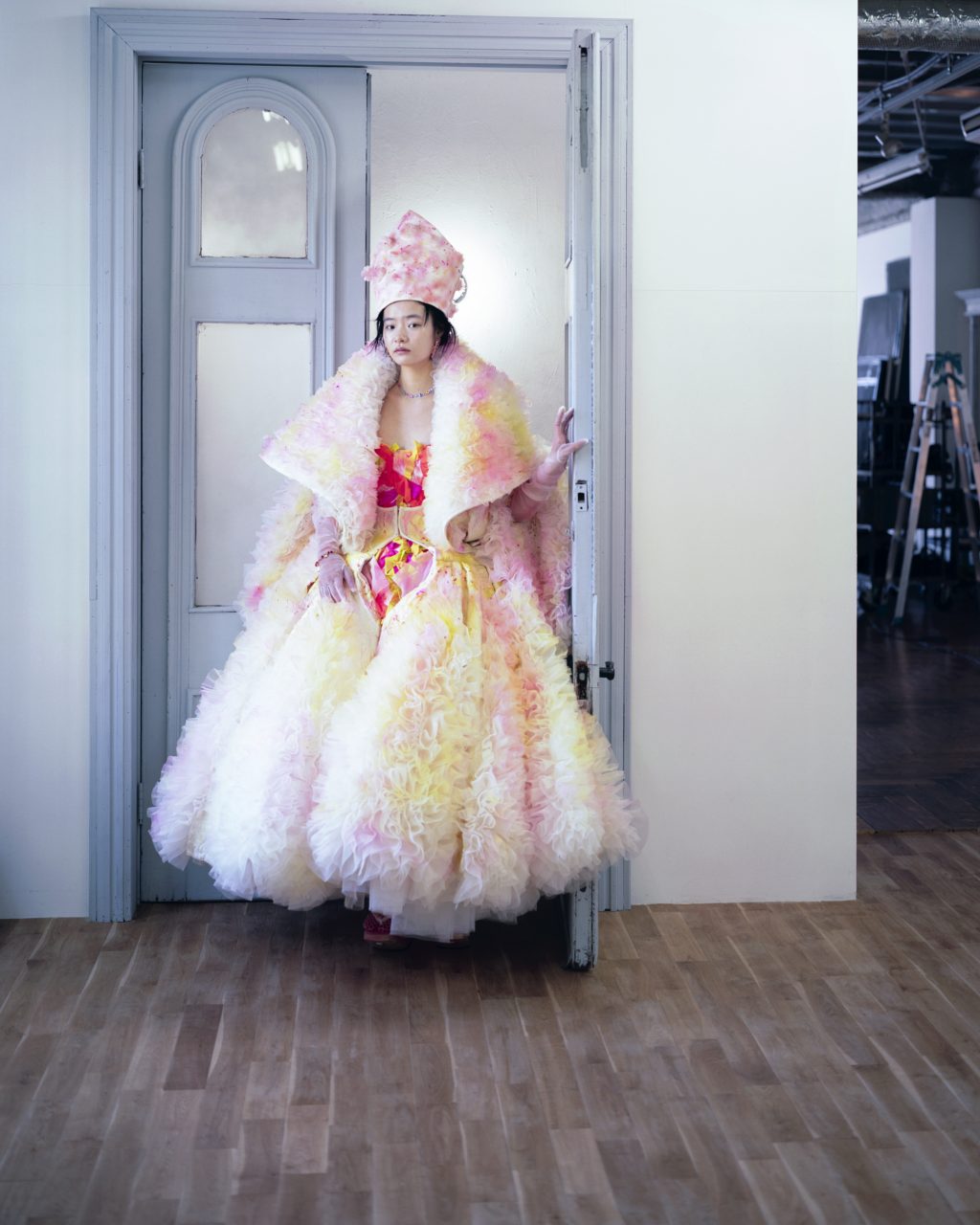
Model Tsugumi Nakamura wears a custom Maison Margiela Artisanal miter, coat, and dress repurposed by Tomo Koizumi.
Photo: Takashi Homma
Meanwhile, when Koizumi’s wedding dress was first unveiled in the Maison Margiela atelier in Paris it was, Galliano recalls, “a really magical day: God’s light was shining through, and then this beautiful wedding dress was presented to myself and Gypsy and Coco”—his Brussels griffon terriers. “Gypsy is old-school,” Galliano explains, “more couture—and she really likes Tomo’s work because of all the fluff and the frills. She was amazed—and it was at that point I felt a huge responsibility.”
Galliano pondered how to upcycle something that represented “one of the greatest days of your life. Taking things apart,” he adds, recalling the limited means of his own student days, when he would repurpose clothes he’d found in the vintage markets, “is the greatest teacher that one could have—[it] is quite a joy to psychologically take myself back to that era, and take it ever further. When I joined Margiela it took me a few seasons to stop being so polished and to embrace that sense of freedom.” He began by meticulously unpicking every net ruffle of Koizumi’s creation—a process that took two people five days—then color-coding them into balls like skeins of wool and using this newly created medium to knit an oversized sweater so that “these generational memories could be worn. I kind of imagined a couple by the moonlight,” Galliano explains, “sharing their stories of beautiful times they’d had together, and those memories smoothing their troubled souls—which the act of knitting does as well, because it’s almost meditative.” The couple Galliano had in mind happened to be the Margiela in-house model-muses Valentine Charasse and Thomas Riguelle. Each garment that the designer creates is fitted on both of them, and if it works on both, “then I think it’s a cool piece to have in the collection,” Galliano explains, “and it is proposed and sold in this genderless manner.”
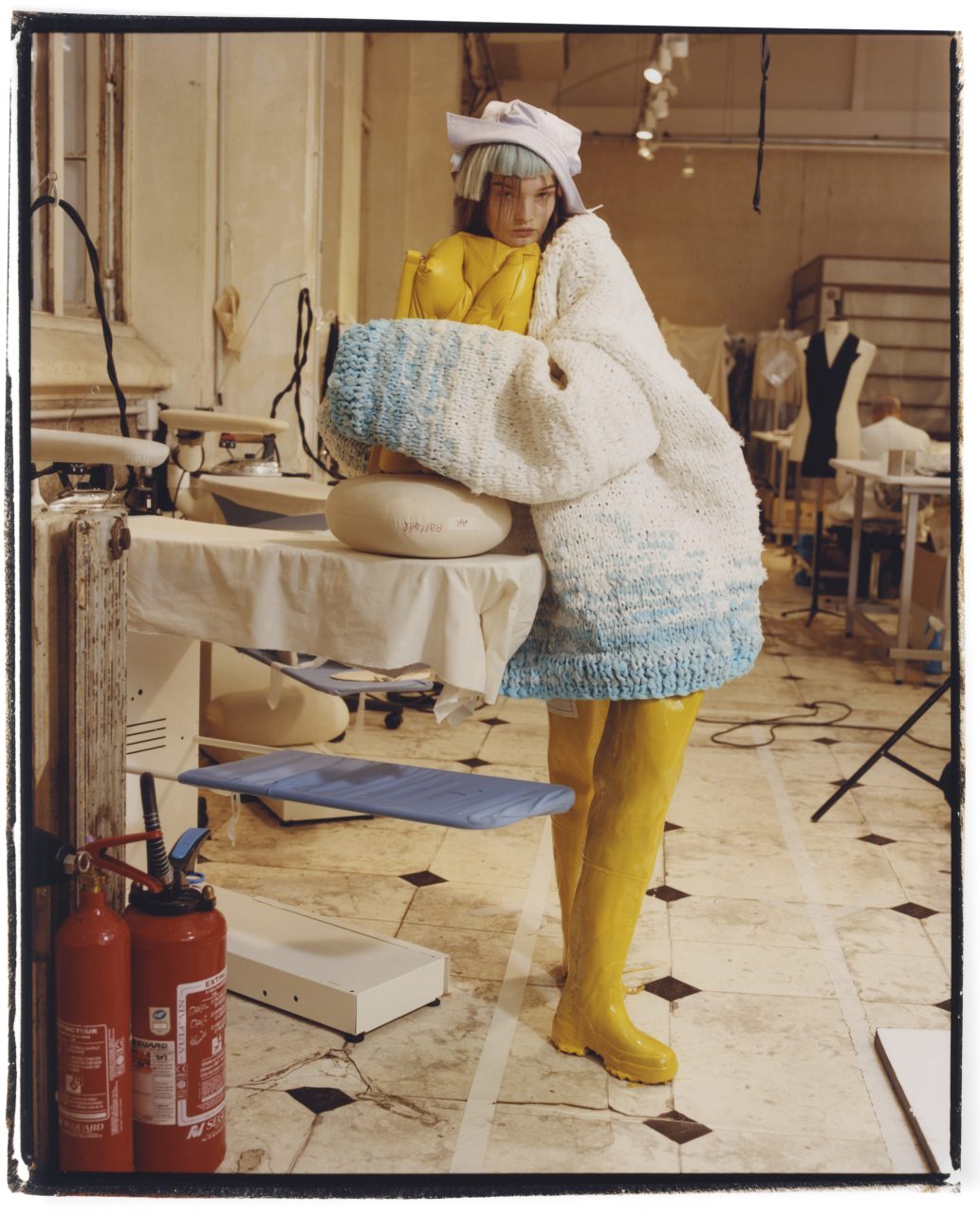
Model Lulu Tenney wears a Tomo Koizumi dress repurposed by John Galliano for MaisonMargiela Artisanal.
Photo: Takashi Homma
The Margiela studio had to produce a number of knit samples to ensure the correct tension and body, “so that it had the emotion, it didn’t look too freshly minted, and it had some soul,” Galliano says. “It’s very nonchalant,” he adds, of the sweater that took 11 days, or 90 hours, to knit, “but it’s quite a chic piece, I think.”
Galliano also eyed the lining. “I couldn’t not do something with it,” he recalls. “So I turned it into a little bonnet with a kind of sun on it. I loved it with the yellow waders and bag—set for a lovely walk in the park.”
The garment now bears the Maison Margiela Recicla label. “Style description, look number four, Tomo Koizumi. Provenance, Japan. Spring 2021.”
Editor
Hamish BowleCredit
Lead image: Maciek Poz ̇oga



